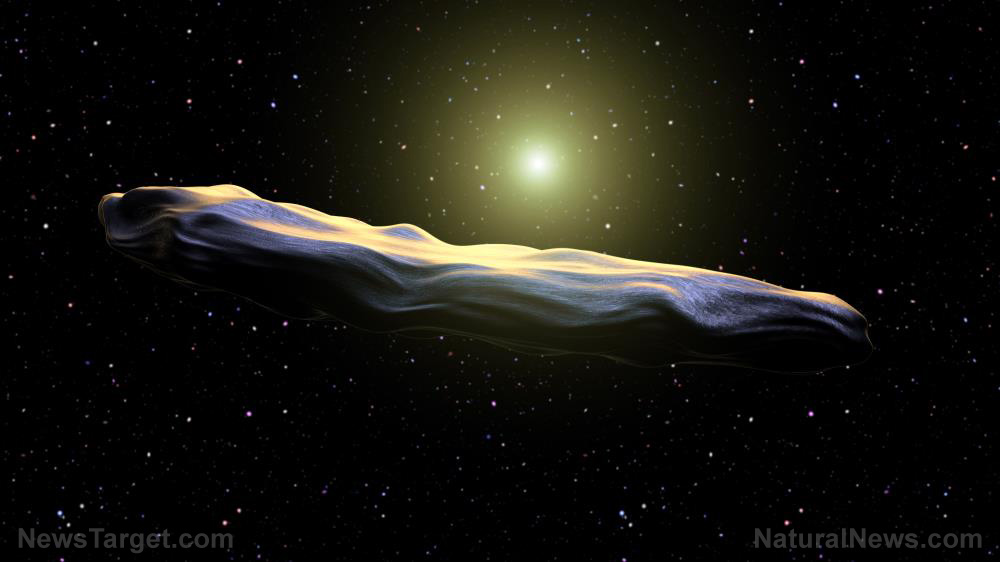
Harvard University astronomer Abraham Loeb claims that a discarded alien machine visited the solar system but was mistaken as a natural object because of "groupthink."
In his forthcoming book, "Extraterrestrial: The First Sign of Intelligent Life Beyond Earth," Loeb wrote about the solar system's first known interstellar visitor, 'Oumuamua. He posited that 'Oumuamua is really technological trash thrown away by an intelligent alien civilization based on its cigar or disk shape, shininess and behavior, which he noted are unlike anything ever seen in the solar system before.
However, Loeb said that his ideas are not taken seriously by the scientific community because everyone refuses to wrest free from the mainstream view that the object was just a space rock.
'Oumuamua's strange properties
'Oumuamua was discovered in 2017 by astronomers at the Haleakala Observatory in Hawaii. Known as the first documented interstellar visitor, the object was strangely luminous for a space rock, brightening at peaks rarely observed in comets and asteroids. Rocky and cigar-shaped with a somewhat reddish hue, it was up to a quarter-mile long and estimated to be 10 times as long as it is wide.
But the most compelling anomaly, according to Loeb, is that 'Oumuamua seemed to accelerate as it moved away from the sun. No space rock except a comet can do that. As a comet passes close to the sun, it warms and starts to release gas. That "outgassing" is responsible for what astronomers call the "comet's tail" – a visible trail of gas and dust that can be as long as hundreds of millions of miles. It acts like burning fuel that escapes from the bottom of a rocket, propelling a comet to higher velocities and new directions through space.
But the observers of 'Oumuamua failed to see a comet's tail. This, together with its unusual shape, suggests that the object might have been a light sail, a form of spacecraft that relies on sunlight to generate propulsion, according to Loeb.
Loeb suspects that the device was a piece of technological trash, or "e-waste," from an alien civilization that produces huge numbers of machines that end up drifting uselessly through space. (Related: Signs of alien civilization: Did astronomers detect “technosignatures?”)
"A buoy. A grid of pods for communication. Signposts that an extraterrestrial civilization could navigate by. Launch bases for probes. Other intelligent living organisms' defunct technology or discarded technological trash," Loeb wrote of the possible explanations for the ‘Oumuamua mystery.
He noted that these explanations are plausible as humans themselves are already producing these things, albeit on a far more limited scale. For one, scientists from the Breakthrough Initiatives, a space science program devoted to the search for extraterrestrial intelligence, have been developing a light sail to be sent to the nearest star system to Earth, Alpha Centauri.
Scientific community rejects alien theory in favor of mainstream explanations
However, scientists also offered mundane explanations for 'Oumuamua's anomalies. Some brushed it off as a "cosmic dust bunny" made of fluffy, ultralight material that can be pushed by sunlight like a light sail. Others maintained that it was a comet of nearly pure hydrogen, releasing molecules that would be invisible to telescopes.
Loeb criticized these explanations, arguing, for instance, that 'Oumuamua couldn't possibly be a hydrogen comet because it would have fallen apart as it approached the sun. He was particularly critical of a study from the International Space Science Institute in Switzerland which he said embodied a "scientific establishment" engaged in "groupthink." The researchers of that study asserted that 'Oumuamua's properties can be explained wholly by natural processes.
Loeb said that he has been mocked for his daring ideas. Yet physicists studying higher dimensions, or string theory, which has never been observed in the real world, are revered in the scientific community. "Instead they get prizes or honors," Loeb said.
For more mind-blowing stories about alien life, visit Cosmic.news.
Sources include:
Please contact us for more information.














